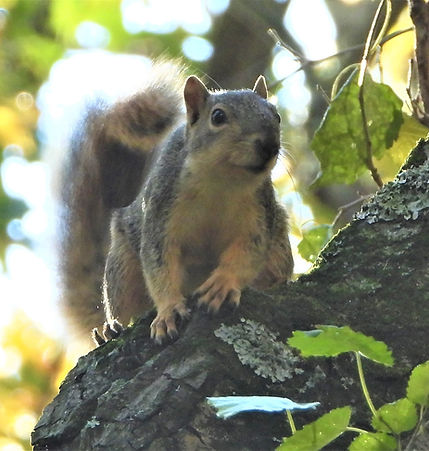

Birdsong Chapter of Illinois Audubon Society
Amboy Marsh Nature Preserve
Green River Lowlands Preserve
©2020 by Amboy Marsh Nature Preserve. Proudly created with Wix.com

Amboy Marsh Nature Preserve
Open dawn to dusk 7 days a week
No dogs allowed
Park in gravel lot - hiking starts there
1701 Morman Rd., Amboy, IL 61310
Gremel Nature Preserve
Open dawn to dusk 7 days a week
No dogs allowed
Park in gravel lot - hiking starts there
1881 Lewis Rd., Amboy, Il 61310
Visit -
Amboy Marsh-1701 Morman Rd.
Gremel - 1881 Lewis Rd., Amboy, Il

Hike, bird-watch, take photographs, and enjoy nature at Amboy Marsh or Gremel Preserve. There are trails leading around ponds, a marsh, wetlands, and oak savanna. Enjoy an easy walk on sandy trails to experience habitats that offer a diversity of plant and wildlife species. Click the "Plan your Visit" tab for trail maps and descriptions. Social distancing of six feet apart is required.
2025 Calendar of Events
Nov 2 - Pizza and photo gathering
December - Christmas Bird Count
The Sanctuary is open for walking during bow hunting season. Wear BRIGHT ORANGE.
The Sanctuary is closed on the following dates during hunting season. No hunting is allowed, but there are adjacent properties where there is hunting.
1 st Firearm Deer Season: 11/21-23/2025
2 nd Firearm Deer Season: 12/4-7/2025
Muzzleloader Only Season: 12/12-14/2025
Firearm Antlerless Deer Season:
1/1-4/2026 & 1/16-18/2026
Be AWARE during Bow Season: 10/1/2025- 1/18/2026

Volunteer Work Days
Volunteers make all of the work at Amboy Marsh and Gremel happen! We can supply tools and training. You could assist with invasive plant removal, maintenance, and other general stewardship tasks. Recent recruits say that "This is easier than I thought it would be!"
WORKDAY CALENDAR THROUGH December
July - Wednesdays 2nd, 16th, 23rd, 30th, Saturday 12th
August - no workday schedule, may have a pop-up
September - Wednesdays 3rd, 17th, 24th
Saturday 13th
October- 1st, 8th, 15th, 29th
Saturday - 25th
November - 5th, 19th
Saturday - 15th
December - no scheduled workdays, may have a pop-up
Watch FaceBook for pop up workdays.
If you have any questions or would like to be a co-crew leader do not hesitate to contact us! Please let us know if you plan to come so we can contact you if the weather changes the plans.
Thank you for all your support!
John McCrosky-815-992-1003
Deb Doyle-815-992-1002
No experience is necessary. Interested? Please contact johncmccrosky@gmail.com
Volunteering is a great way to get out of your shell!

At-Home Projects
Click below to connect to projects related to birds and nature at home that are offered by Illinois Audubon.

Enjoy a visit to an Illinois Audubon Sanctuary this Fall!
Click the photo to see our
Fall 2025 newsletter
Birdsong Big Sit Team Places 3rd!
In late September, a state birding event, The Big Sit, was hosted by the Illinois Audubon Society. The event is very similar to a Global Big Day; a competition in which bird watchers counts as many species as possible in a 24-hour period. While Global Big Day involves moving from place to place to maximize the number of species spotted, The Big Sit competition is exactly as it sounds and stays in one place.
A circle 17’ in diameter, called a "count circle”, is set up and only species observed or heard from that circle count for the final species total. A Birdsong Chapter team took third place out of 41 teams across Illinois in the number of birds observed and first place in hours of observation with a total of 71 species and 15 continuous hours of birding.
Our team, “Just Winging It” was made up of five observers, including Dave Brewer, James Hampson, Stephen Hager, and Adrianh Martinez-Orozco. We assembled a team of ringers! Jim has birded forever and has participated in over 50 Christmas Bird Counts, Steve is a Biology/Ornithology professor at Augustana, and Adrianh is a photographer, veterinarian and occasional bird tour leader. Our count circle was located at Gremel Wildlife Sanctuary near Amboy at the edge of the woods and by the edge of a pond and a small wetland. If the birds are in our favor, next year, we’re taking first!


Big Sitters Jim Hampson, Stephen Hagar, and Adrianh Martinez-Orozco - photo by Dave Brewer
photo by Adrianh Martinez-Orozco

photos by Adrianh Martinez-Orozco

Dave Brewer

Sandhill Cranes
Education & Outreach
The 352 acres of Amboy Marsh and 430 acres of Gremel are critical habitat that was once part of the wetlands in Lee County called the Inlet and Winnebago Swamps. These peaceful sites are home for many flora and fauna. With the goal of restoring and protecting habitat, the areas do not offer amenities for people, but you may enjoy great hikes, photography and birdwatching. An additional 20 acre Ryback site and 80 acre Grigalouski site provide additional habitat in Lee County.
If you feel a connection to the marsh, join the group that cares for this place: The Birdsong Chapter of Illinois Audubon Society. Learn more about what we do and how you can join. Contact amboymarsh@illinoisaudubon.org.
Our main goal is to preserve habitat for plants and animals at the sites. We hold work days, offer programs at monthly meetings of the Birdsong Chapter and host other outdoor events. Contact us to learn more about our organization on Facebook at Birdsong Chapter-Stewards of Amboy Marsh/Gremel, or at https://illinoisaudubon.org/location/amboy-marsh-nature-preserve/. Our email is
amboymarsh@illinoisaudubon.org.
Please contact us to schedule any day you would like to come out to work. There is plenty to do and we'll work with you to find something that suits your interest and schedule. amboymarsh@illinoisaudubon.org.

